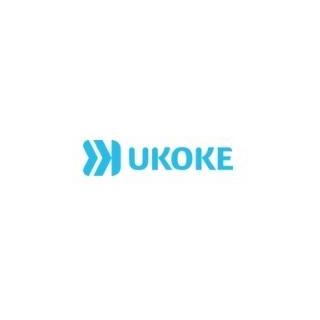2030, Artificial Intelligence Market Size, | Latest Growing CAGR Status And Leading Players
The Global Artificial Intelligence Market 2030 Research Report Analysis and Outlook Insights | Latest Updated Report | is segmented into Offering (Hardware, Software), Technology (ML (Deep Learning (LLM, Transformers (GPT 1, 2, 3, 4)), NLP, Computer Vision), Business Function, Vertical, and Region. The report presents the research and analysis provided within the Artificial Intelligence (AI) Market Research is meant to benefit stakeholders, vendors, current trends, opportunities and other participants in the industry. It includes his CAGR status of the market and provides important information on how the market has progressed over time. The Artificial Intelligence (AI) Market report is an invaluable tool for businesses as it provides a comprehensive overview of market dynamics, SWOT analysis, and future strategies that will help your business succeed in the future.
Who is the largest Manufacturer of Artificial Intelligence (AI) Market worldwide?
Google (US), Microsoft (US), IBM (US), Oracle (US), AWS (US), Intel (US), Salesforce (US), SAP (Germany), Cisco (US), Meta (US), HPE (US), Siemens (Germany), Huawei (China), NVIDIA (US), Baidu (China), SAS Institute (US), OpenAI (US), H2O.ai (US), iFLYTEK (China), Alibaba Cloud (China), General Vision (US), Darktrace (UK), Blackberry Limited (Canada), DiDi Global (China), Face++ (China), Inbenta (US), Anju Software (US), Butterfly Network (US), Atomwise (US), AIBrain (US), SK Hynix (South Korea), Progress (US), PrecisionHawk (US), AgEagle Aerial System (US), Neurala (US), Twitter (US), Aurea Software (US), Persado (US), 8x8 (US), Appier (Taiwan), GumGum (US), IPRO (US), Graphcore (UK), Preferred Networks (Japan), Applied Brain Research (Canada), Pilot AI (US), Iris Automation (US), Gamaya (Switzerland), ec2ce (Spain), Descartes Labs (US), Mythic (US), Ada (Canada), Mostly AI (Austria), Sentient.io (Singapore), Lumen5 (Canada), AI Superior (Germany), Fosfor (India), Intrinsic (US), Jasper (US), Soundful (US), Writesonic (US), One AI (Israel).
Download PDF Brochure and Unleash Full Potential : https://www.marketsandmarkets.com/pdfdownloadNew.asp?id=74851580
The Global Artificial Intelligence Market 2030 Research Report Analysis and Outlook Insights | Latest Updated Report | is segmented into Offering (Hardware, Software), Technology (ML (Deep Learning (LLM, Transformers (GPT 1, 2, 3, 4)), NLP, Computer Vision), Business Function, Vertical, and Region. The report presents the research and analysis provided within the Artificial Intelligence (AI) Market Research is meant to benefit stakeholders, vendors, current trends, opportunities and other participants in the industry. It includes his CAGR status of the market and provides important information on how the market has progressed over time. The Artificial Intelligence (AI) Market report is an invaluable tool for businesses as it provides a comprehensive overview of market dynamics, SWOT analysis, and future strategies that will help your business succeed in the future.
Who is the largest Manufacturer of Artificial Intelligence (AI) Market worldwide?
Google (US), Microsoft (US), IBM (US), Oracle (US), AWS (US), Intel (US), Salesforce (US), SAP (Germany), Cisco (US), Meta (US), HPE (US), Siemens (Germany), Huawei (China), NVIDIA (US), Baidu (China), SAS Institute (US), OpenAI (US), H2O.ai (US), iFLYTEK (China), Alibaba Cloud (China), General Vision (US), Darktrace (UK), Blackberry Limited (Canada), DiDi Global (China), Face++ (China), Inbenta (US), Anju Software (US), Butterfly Network (US), Atomwise (US), AIBrain (US), SK Hynix (South Korea), Progress (US), PrecisionHawk (US), AgEagle Aerial System (US), Neurala (US), Twitter (US), Aurea Software (US), Persado (US), 8x8 (US), Appier (Taiwan), GumGum (US), IPRO (US), Graphcore (UK), Preferred Networks (Japan), Applied Brain Research (Canada), Pilot AI (US), Iris Automation (US), Gamaya (Switzerland), ec2ce (Spain), Descartes Labs (US), Mythic (US), Ada (Canada), Mostly AI (Austria), Sentient.io (Singapore), Lumen5 (Canada), AI Superior (Germany), Fosfor (India), Intrinsic (US), Jasper (US), Soundful (US), Writesonic (US), One AI (Israel).
Download PDF Brochure and Unleash Full Potential : https://www.marketsandmarkets.com/pdfdownloadNew.asp?id=74851580
2030, Artificial Intelligence Market Size, | Latest Growing CAGR Status And Leading Players
The Global Artificial Intelligence Market 2030 Research Report Analysis and Outlook Insights | Latest Updated Report | is segmented into Offering (Hardware, Software), Technology (ML (Deep Learning (LLM, Transformers (GPT 1, 2, 3, 4)), NLP, Computer Vision), Business Function, Vertical, and Region. The report presents the research and analysis provided within the Artificial Intelligence (AI) Market Research is meant to benefit stakeholders, vendors, current trends, opportunities and other participants in the industry. It includes his CAGR status of the market and provides important information on how the market has progressed over time. The Artificial Intelligence (AI) Market report is an invaluable tool for businesses as it provides a comprehensive overview of market dynamics, SWOT analysis, and future strategies that will help your business succeed in the future.
Who is the largest Manufacturer of Artificial Intelligence (AI) Market worldwide?
Google (US), Microsoft (US), IBM (US), Oracle (US), AWS (US), Intel (US), Salesforce (US), SAP (Germany), Cisco (US), Meta (US), HPE (US), Siemens (Germany), Huawei (China), NVIDIA (US), Baidu (China), SAS Institute (US), OpenAI (US), H2O.ai (US), iFLYTEK (China), Alibaba Cloud (China), General Vision (US), Darktrace (UK), Blackberry Limited (Canada), DiDi Global (China), Face++ (China), Inbenta (US), Anju Software (US), Butterfly Network (US), Atomwise (US), AIBrain (US), SK Hynix (South Korea), Progress (US), PrecisionHawk (US), AgEagle Aerial System (US), Neurala (US), Twitter (US), Aurea Software (US), Persado (US), 8x8 (US), Appier (Taiwan), GumGum (US), IPRO (US), Graphcore (UK), Preferred Networks (Japan), Applied Brain Research (Canada), Pilot AI (US), Iris Automation (US), Gamaya (Switzerland), ec2ce (Spain), Descartes Labs (US), Mythic (US), Ada (Canada), Mostly AI (Austria), Sentient.io (Singapore), Lumen5 (Canada), AI Superior (Germany), Fosfor (India), Intrinsic (US), Jasper (US), Soundful (US), Writesonic (US), One AI (Israel).
Download PDF Brochure and Unleash Full Potential : https://www.marketsandmarkets.com/pdfdownloadNew.asp?id=74851580
0 Komentar
0 Bagikan












